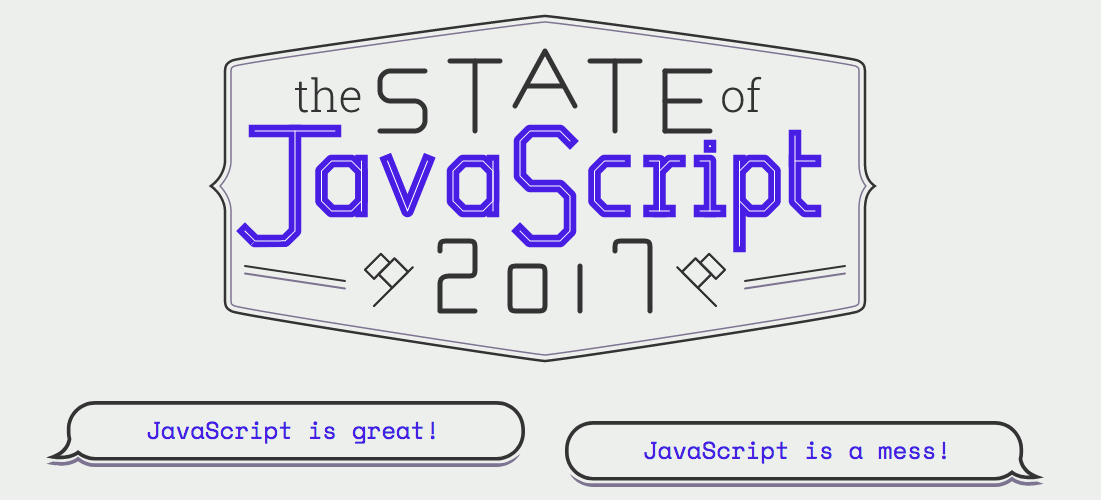I am excited about what the JavaScript development has in store for 2018. I am mostly excited because in this ecosystem, the feedback loop of tools and frameworks is closing, and both library authors and developers want and expect more stability.
2016 had so many new ideas!
In 2016 I worked only using AngularJS and I was proud of the fact that projects using it were very successful and got results very fast.
At the same time, JS frameworks were competing to replace it. There were concerns about the scalability of AngularJS: it was hard to grow an AngularJS app to enterprise level for large teams also AngularJS was not designed with high performance in mind, which limited its usage on mobiles.
React, Vue and Angular 2 were battling for the minds of developers as well as many other accompanying tools, to build their apps. In 2016, this “Cambrian explosion” of JS libraries and tools made many of the tools I used for less than 2 years, outdated.
Particularly React and Angular 2, had very different ecosystem models. React, counted on a rich ecosystem of plugins was a big pool of ideas and approaches, while Angular, with a “batteries included“ approach drew a less diverse community of users that simply wanted to be productive. React became the Bazaar and Angular, the Cathedral.
Projects based on either ecosystem had to be architected very differently, because the philosophies of development were very different. Certainly, React still has a more vocal and active community, but it seemed to reinvent its own wheels, while Angular failed to excite its users to innovate.
The fatigue
Competition is a good thing! The new tools we saw during most of this Cambrian era turned JavaScript into a very exciting space. At the very least, JavaScript developers should be proud because they have become more critical then their peers when it comes to choosing their tools.
However, keeping up represented a considerable amount of energy. As I moved to another project and team, I realized how “obsolete” my tools had become. If faced with a choice, I had to move to another framework, and there was no clear winner.
I love development, but a feeling of dread took me. I was not able to articulate why, until a came across this article by Jose Aguinaga:
How it feels to learn JavaScript in 2016
Tools and frameworks switched too fast, they got rewritten, scraped and redone without care for compatibility. New and shiny was often considered better. I became tired of keeping up, I found that some people called it “JavaScript Fatigue”.
Remaking a similar framework or state management library that proposes little new things or often, making a “lightweight” version of something else is not very useful innovation. But in 2017 some things did change.
The state of JavaScript in 2017
The state of JavaScript in 2017 survey jokingly says “JavaScript is a mess” on the left side of its homepage. But I have reasons to think this will not be there in the 2018 survey.

I am optimistic because the JavaScript community is maturing; I see less rewrites, more backward compatibility, more migration handbooks. I also see how developers expect more cohesion in the open-source tools they use.
React with a new standard open source license, MIT, has won confidence of corporate users. Both NPM and Webpack are very conscious of making any breaking changes; they stay current and useful by providing long terms solutions to specific problems. State management, on the other hand, might get disrupted by GraphQL, but this change will need to onboard back-end developers in many languages as well.
Our users, customers (and bosses), should not have to care whether we are using the latest tools, as long we are able to deliver great products. This is important, because developers should be in charge of their choices; good products deserve to be developed with stable and constant tools. I think the JavaScript community at large has learned this lesson.
I also see more important innovation where it matters (GraphQL APIs) so we can actually be more productive in our work. I predict happier users (and happier bosses) in this environment of stability.
The state of JavaScript in 2017 survey also says “JavaScript is great!” on the left side of its homepage. I believe this will be written in the 2018 survey as well.